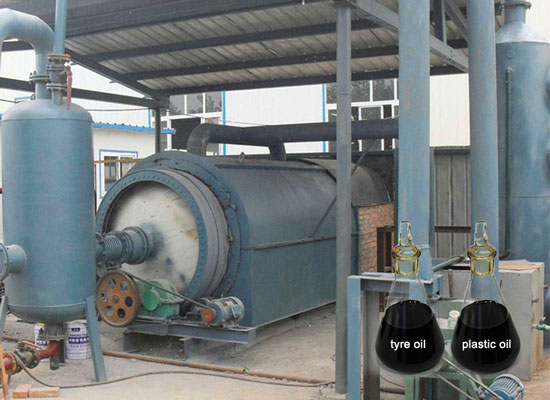Did you know that approximately 7% of global oil reserves are used to produce plastic bags; that nearly 900 million barrels of crude oil (a nonrenewable energy source) are used every year to make plastic? What if we could reverse the process, turn plastic waste back into oil?
Both a boon and a bane, plastic has touched almost every part of modern life. It’s everywhere — we eat and drink from it or with it, we drive encased in it, we wear it, we are entertained by it, it’s used in the construction of our homes, and many products in our hospitals are plastic. Plastic has made our lives easier and we have become dependent on it. But it’s this very usefulness — some 260 million tons of plastic are produced each year globally — that’s behind plastic’s biggest problem. What do you do with it when it’s no longer needed, useful or usable?

Our disposable Western mindset tells us to simply throw the snapped plastic fork or the empty plastic bottle out with the trash. Many of us recycle, but still, it’s estimated that less than 4 percent (2 million tons) of plastic waste is recycled in the U.S., leaving about 46 million tons to be disposed of in other ways.
Whether it’s incinerated (which produces hazardous emissions and toxic ash) or buried in landfills (where various toxic chemicals are released during the slow degradation of plastics) or dumped at sea, humans, animals and the environment suffer as a result.
There’s a video bouncing around the internet featuring a Japanese scientist who claims to turn plastic back into oil with a desktop machine. Sounds too good to be true, but indeed it is. His machine, The Blest Machine, uses thermochemical decomposition (pyrolysis process) to produce oil from plastic waste, with little byproduct. With his machine capable of turning 1 kg of plastic waste into 1 liter of oil, the scientist, Akinori Ito, sees plastic waste as a potential oil field.
How Pyrolysis works: Plastic trash (for the Blest machine, just crushed polypropylene, polyethylene and polystyrene plastic chips), is placed in the machine. The temperature inside is raised, slowly melting the plastic, which becomes a liquid and then a gas. The gas passes through a tube into a container filled with water, where it then cools and forms oil. That oil can be burned or further processed into gasoline, diesel or kerosene.
Now here’s an idea — picture tankers housing Envion’s Oil Generators anchored out in the middle of the Great Pacific Garbage Patch, ridding the ocean of the plastic debris threatening the health of marine life and our seas.
The article sourche: http://www.sierrastar.com/2014/12/11/71268/oil-from-plastic.html

